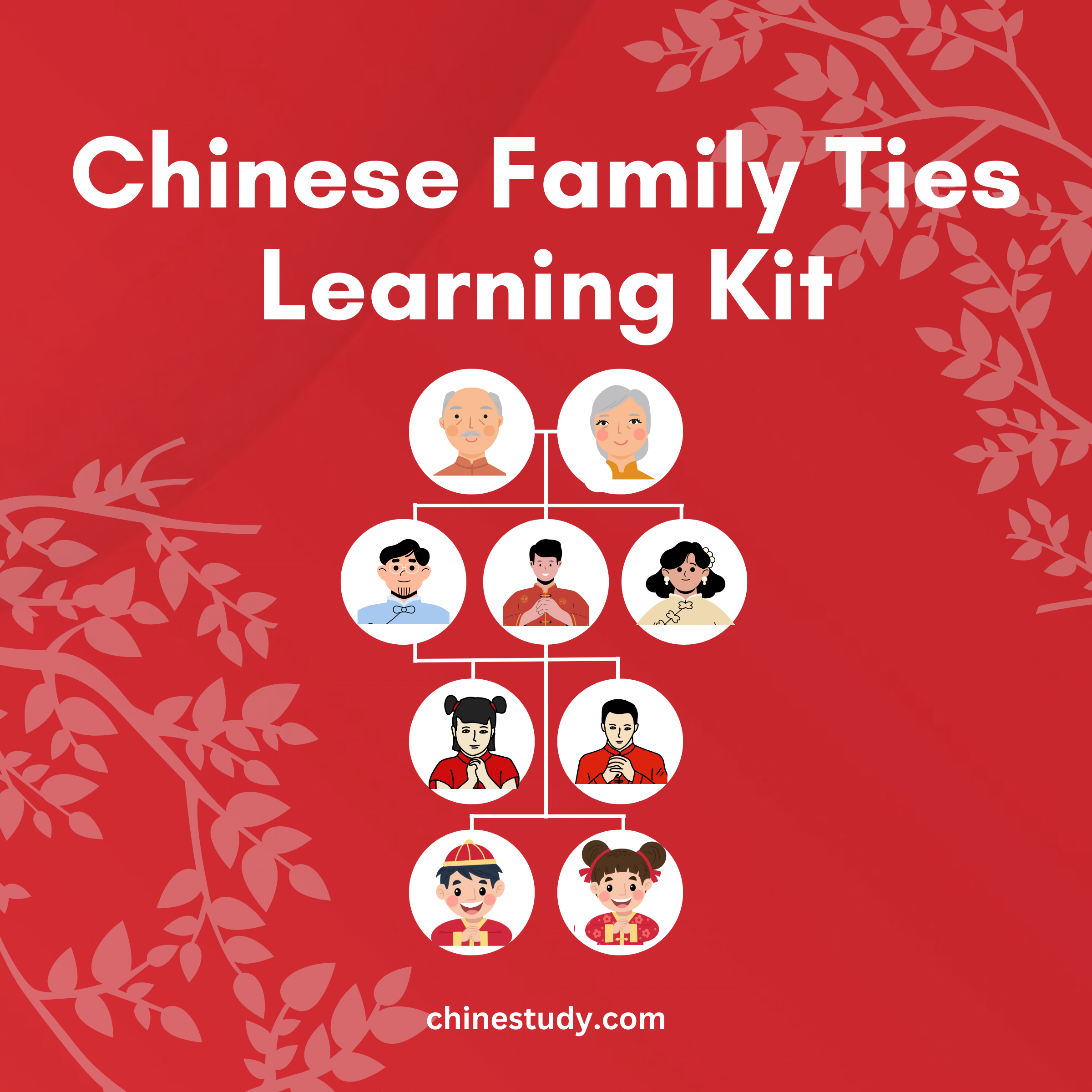Chinese Family Ties Learning Kit
Master Key Family Vocabulary in Mandarin

Importance of Learning Family Member Names in Chinese
Learning the names of family members in Chinese is essential for understanding the language and culture.
China's family structure is unique, and the terms for family relations are specific. By mastering these terms, you boost your vocabulary and gain insights into cultural nuances. This knowledge is useful in conversations, whether you're interacting with native speakers, conducting business, or traveling to China.
Additionally, it sets a solid foundation for expanding your language skills into more complex areas. With the Chinese Family Ties Learning Kit, this process becomes engaging and intuitive, making the fluency journey enjoyable and rewarding.
What Our Kit Offers:
- Flashcards: Quick and easy vocabulary learning.
- Family Ties Chart: Visual reference to understand family relationships.
- On-the-Go Learning: Audio guide for learning anytime, anywhere.
- Speak Like a Native: Video guide for honing your pronunciation skills.
Benefits For You:
- Varied Learning Tools: Flashcards, charts, audios, and videos keep learning exciting.
- Flexible Learning: Learn at your own pace and in your preferred style.
- Daily Practice: Regular engagement leads to improved pronunciation and vocabulary retention.
- Confidence Boost: Increased confidence in using Mandarin in everyday conversations.
New to Chinese? Fret not. Our Learning Kit is specifically designed for beginners. With our efficient approach and your dedicated practice, you can confidently integrate new words into daily conversation in no time!
Q&A
Q: What does the Chinese Family Ties Learning Kit include?
A: The kit includes flashcards, an infographic, an audio guide, and a video guide, all designed to help you learn essential Chinese family vocabulary.
Q: How do I use the flashcards?
A: Print the flashcards, cut them out, and use them for regular practice. You can also play flashcard games with friends and family to reinforce learning.
Q: How do I access the learning materials?
A: After enrolling, you will be directed to the product page and receive an email with a link to access the materials.
Q: How long do I have access to the kit?
A: Once you download the kit, you have lifetime access to all materials. Use them at your own pace.
Q: Can I use the materials offline?
A: Yes, you can download the audio and video guides to your device and access them anytime, anywhere.
Q: What should I do if I have questions or need help?
A: Feel free to contact us via email if you have any questions or need assistance with the materials.
Q: How can I make the most of the learning kit?
A: Engage actively with the materials by testing yourself regularly, practicing speaking aloud, and incorporating the vocabulary into everyday conversations.
